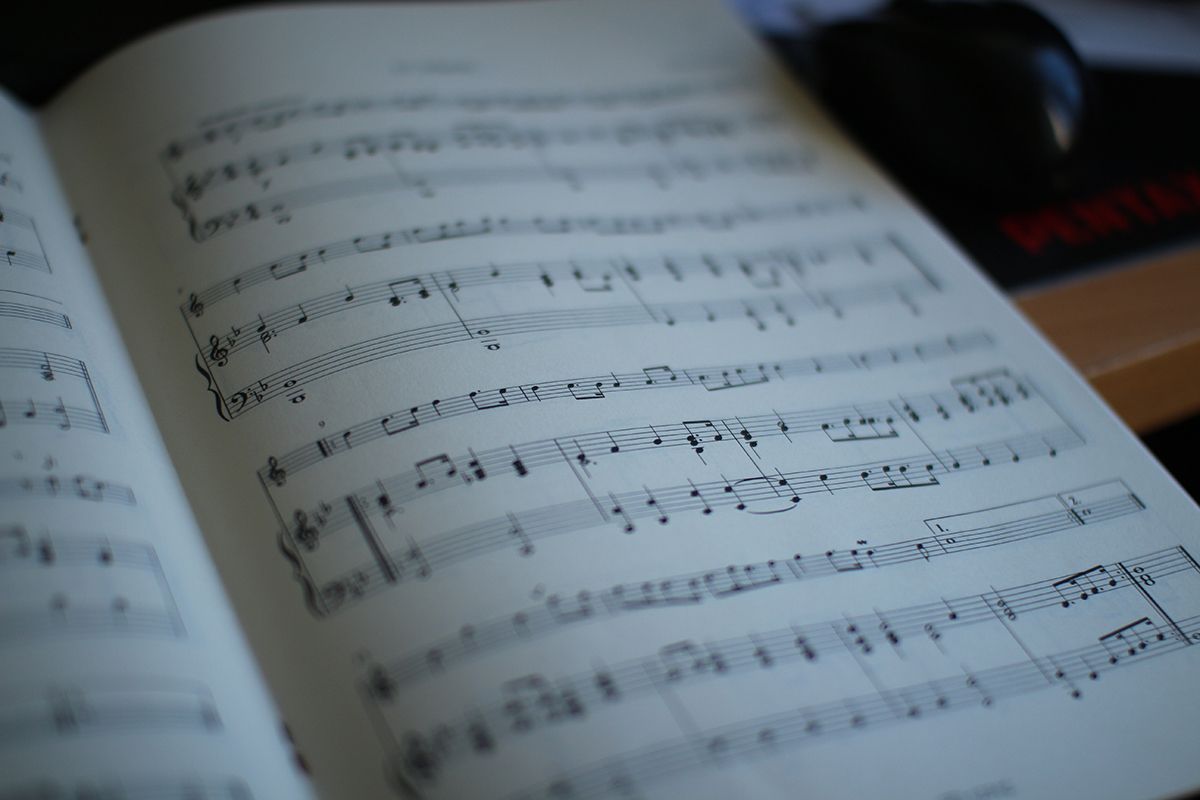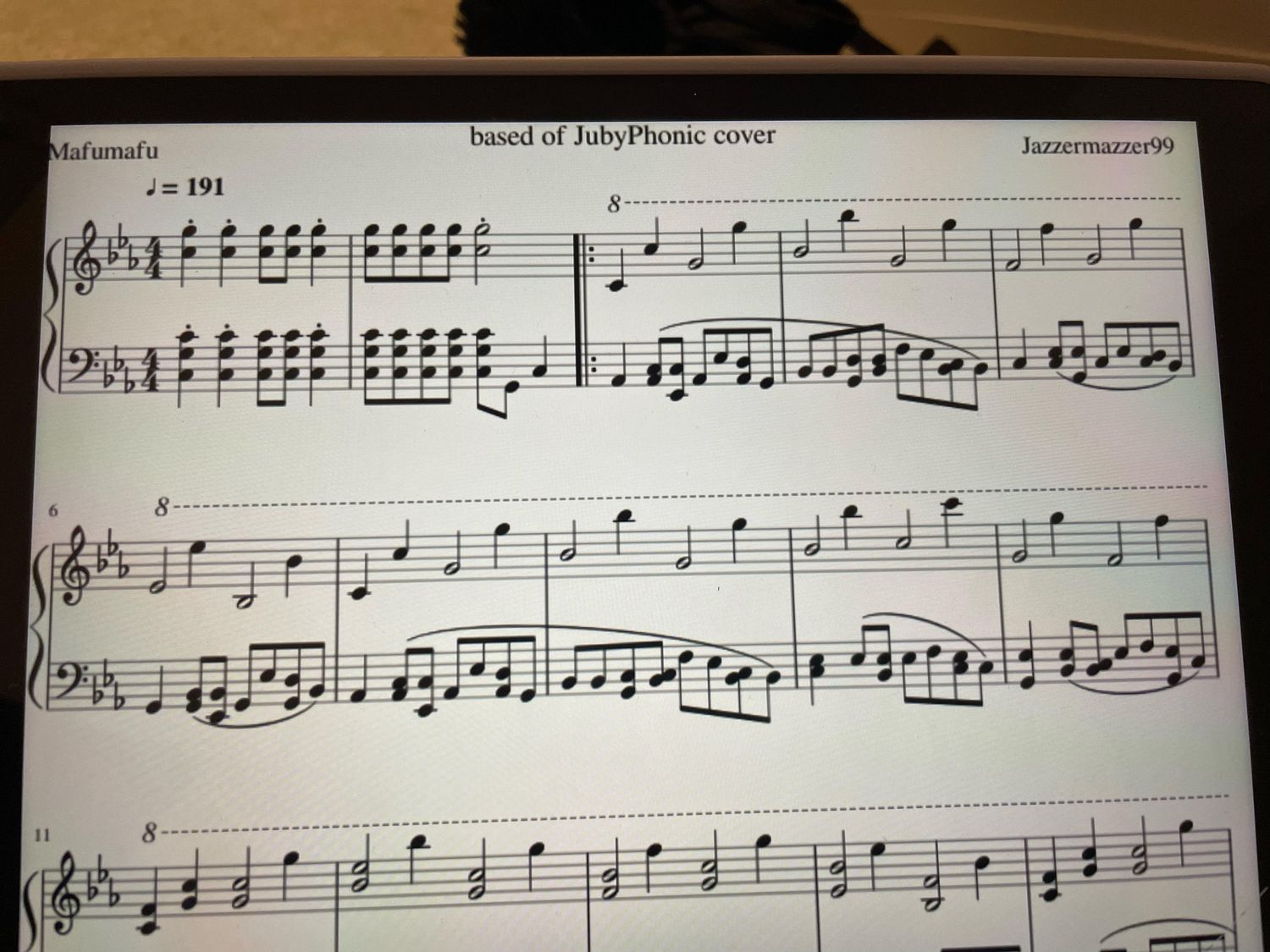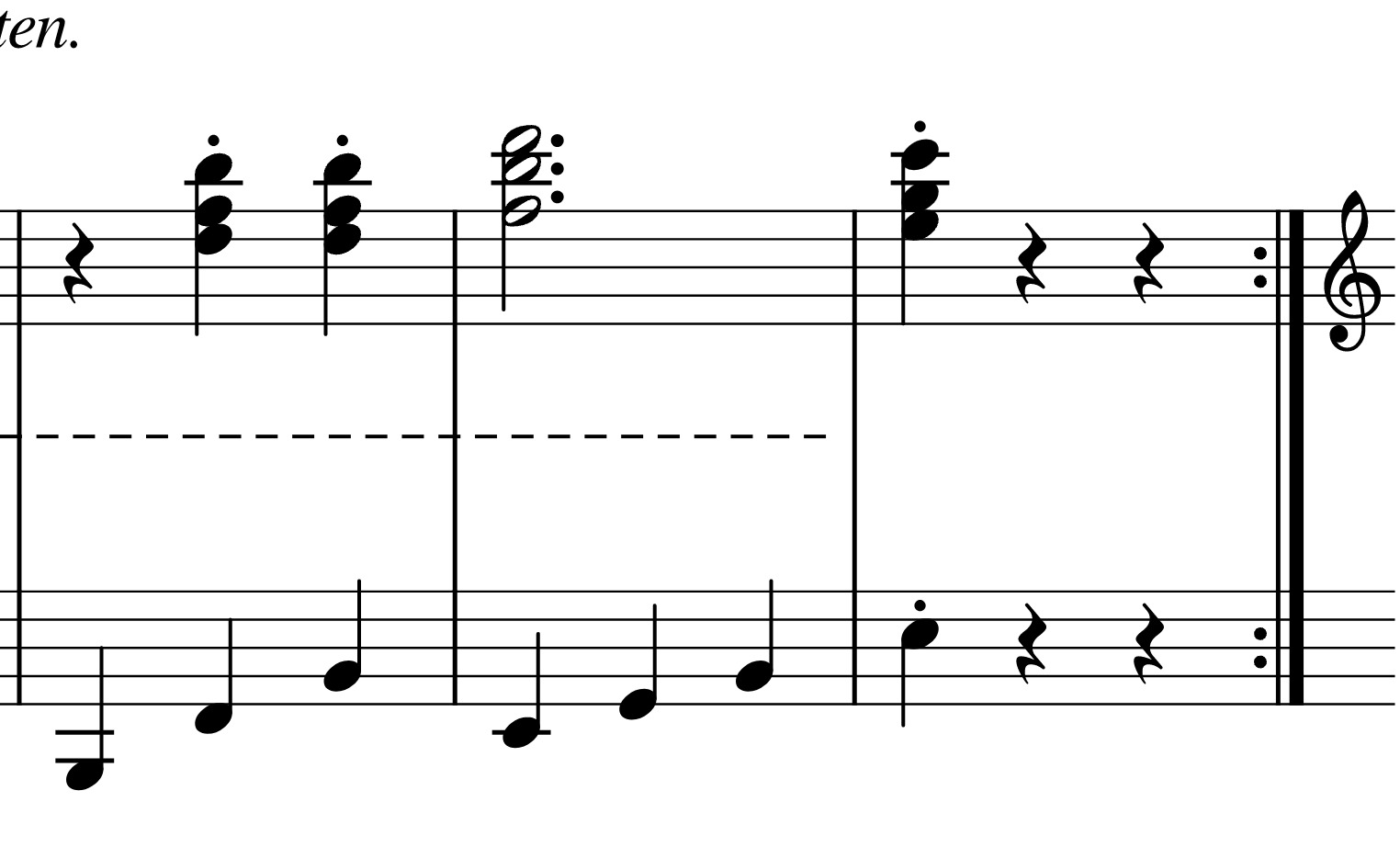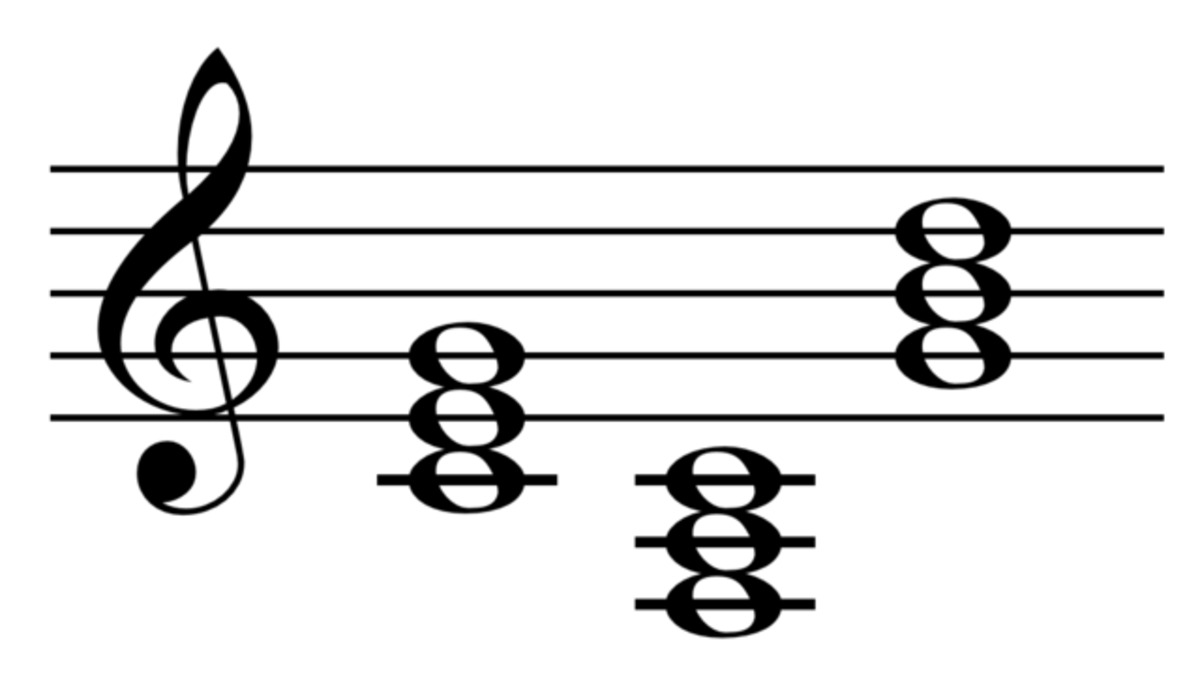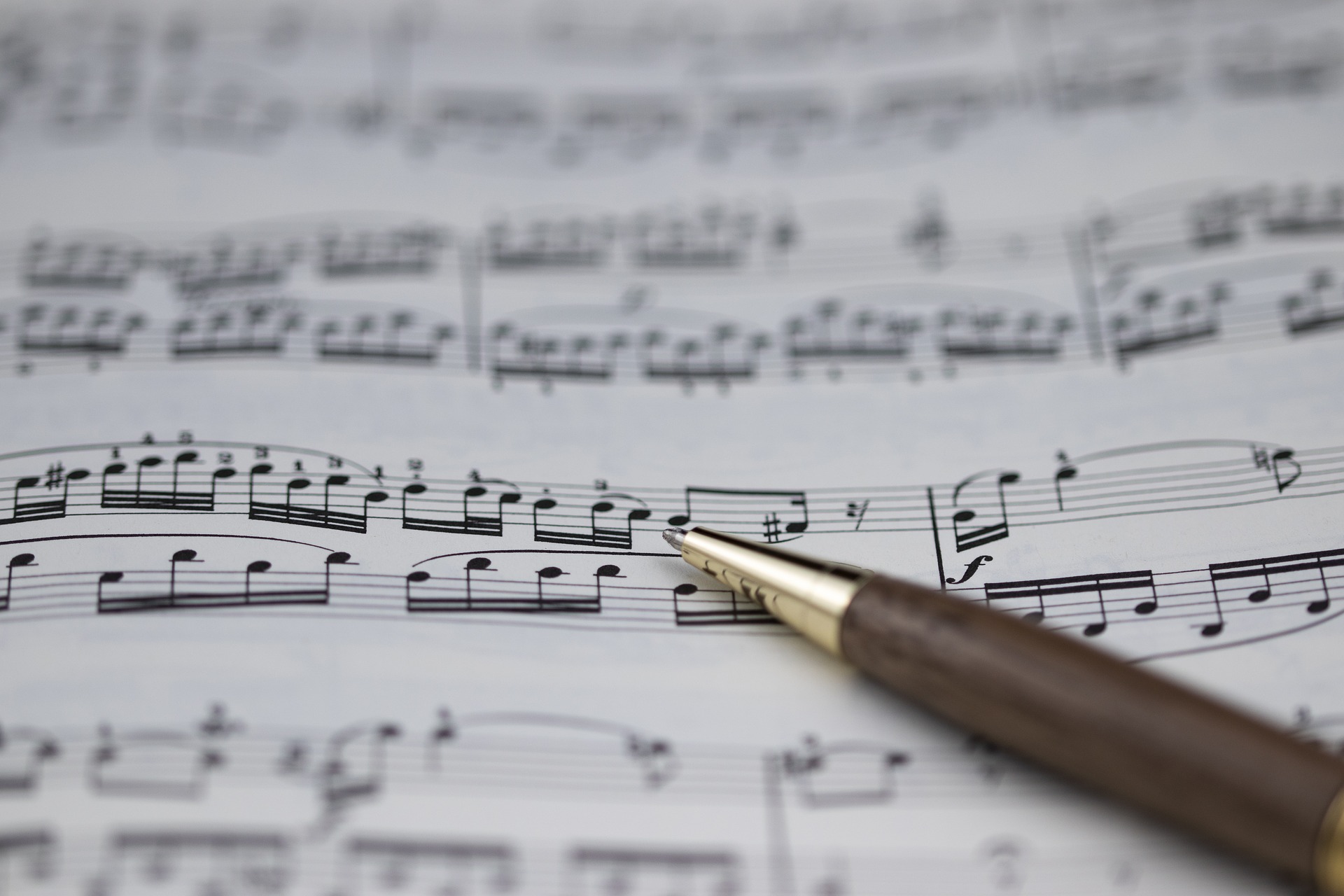Home>Production & Technology>Music Theory>What Is Music Theory And Composition


Music Theory
What Is Music Theory And Composition
Published: January 31, 2024
Discover the fundamentals of music theory and composition with our comprehensive guide. Explore the principles and techniques behind music creation and enhance your understanding of harmonies, melodies, and rhythms.
(Many of the links in this article redirect to a specific reviewed product. Your purchase of these products through affiliate links helps to generate commission for AudioLover.com, at no extra cost. Learn more)
Table of Contents
Introduction
Music is a universal language that has the power to evoke emotions, tell stories, and bring people together. Behind every captivating melody and harmonious composition lies the intricate world of music theory and composition. Whether you are an aspiring musician, a seasoned composer, or simply a curious enthusiast, delving into the depths of music theory can enrich your understanding and appreciation of the art form.
Music theory serves as the foundation for creating, understanding, and analyzing music. It encompasses a wide range of concepts and principles that govern how music is composed, organized, and performed. From the basic elements of pitch and rhythm to the complexities of harmony, form, and structure, music theory provides a framework for musicians to communicate and express their artistic ideas.
Understanding music theory allows musicians to break down complex musical pieces into smaller components, enabling them to dissect melodies, identify chord progressions, and decipher rhythmic patterns. It equips them with the tools to analyze and interpret the intentions behind a composition, uncover hidden nuances, and make informed artistic choices.
Moreover, music theory plays a vital role in music composition. By studying the rules and principles of harmony, chord progressions, and musical forms, composers can craft intricate and compelling musical works. Music theory helps them navigate the vast possibilities of musical combinations, ensuring coherence, balance, and emotional impact in their compositions.
Music theory and composition go hand in hand, providing composers with a language and set of tools to convey their musical visions effectively. Whether it’s creating a catchy pop melody, an orchestral symphony, or a soulful jazz improvisation, an understanding of music theory elevates the level of craftsmanship and artistic expression.
In this article, we will explore the fundamental concepts of music theory, including pitch and melody, rhythm and meter, harmony and chords, and form and structure. We will also delve into the techniques of music composition and discuss the role of music theory in the creative process. So, grab your headphones, settle in, and prepare to embark on a fascinating journey into the realm of music theory and composition.
What is Music Theory?
At its core, music theory is an academic discipline that explores the principles and rules governing the creation and interpretation of music. It encompasses the study of various elements of music, including pitch, melody, rhythm, harmony, form, and structure.
Music theory provides the framework for understanding and analyzing how music works. It allows musicians to communicate and express their ideas effectively, leading to more meaningful musical performances and compositions.
One of the main objectives of music theory is to establish a common language for musicians. By studying music theory, musicians can communicate musical ideas using standard notation, symbols, and terminology. This universal language allows for precise communication between performers, composers, music educators, and musicologists.
Music theory is not limited to one particular style or genre of music. It is applicable to various musical traditions and styles, including classical, jazz, rock, pop, folk, and more. Regardless of the genre, the concepts and principles of music theory remain the same, providing a foundation for understanding and creating music across different styles.
Moreover, music theory helps musicians in analyzing and interpreting musical compositions. By understanding the underlying structure, harmony, and melodic patterns, musicians can uncover the artistic intent of a piece, explore its emotional depth, and make informed artistic decisions in their interpretation and performance.
While music theory itself is an academic pursuit, it is not a set of rigid rules that limit creativity. Instead, it serves as a guide that musicians can use to enhance their creative process. Music theory provides a toolbox of techniques and concepts that musicians can experiment with, helping them develop their unique style and musical voice.
Overall, music theory is a fundamental aspect of music education and performance. It not only provides a foundation for understanding and appreciating music but also empowers musicians to create, interpret, and connect with their audience on a deeper level. By delving into the world of music theory, musicians can unlock new possibilities and enrich their musical journeys.
The Fundamentals of Music Theory
Understanding the fundamentals of music theory is essential for anyone looking to develop a solid foundation in music. These fundamentals provide the building blocks and rules that govern how music is created, organized, and performed. Let’s explore some of the key concepts that form the basis of music theory.
Pitch: Pitch refers to the perceived frequency of a sound and is the foundation of melody and harmony. It is classified using a system of notes represented by letters A through G, with each note corresponding to a specific frequency. The arrangement of pitches creates melodies and provides the framework for melodies to be harmonized.
Melody: Melody is a sequence of pitches played consecutively and is often considered the most memorable and recognizable element of music. Melodies are formed by a series of musical phrases that convey a sense of direction, movement, and emotion.
Rhythm: Rhythm is the pattern of musical movement in time. It is created by varying the duration and spacing of sounds and rests. Rhythm provides a sense of pulse and groove to music and is crucial for establishing the overall structure and feel of a composition.
Meter: Meter refers to the organization of beats into regular patterns. It defines the underlying rhythmic structure and helps establish the framework for a musical composition. Common meters include duple meter (strong-weak), triple meter (strong-weak-weak), and quadruple meter (strong-weak-medium-weak).
Harmony: Harmony refers to the combination of pitches played simultaneously, creating chords and chord progressions. It adds depth and richness to music and helps establish the tonality and mood of a composition. Understanding harmonic relationships allows musicians to create pleasing and coherent musical arrangements.
Form: Form refers to the structure and organization of a musical composition. It determines how different sections of a piece relate to each other, creating a sense of coherence and balance. Common musical forms include binary, ternary, rondo, and sonata forms.
These fundamentals serve as the building blocks of music theory and provide the foundation for further exploration and study. By understanding and applying these concepts, musicians can analyze, interpret, and create music with greater depth and understanding.
As you delve deeper into music theory, you will encounter additional concepts and techniques that expand upon these fundamentals. From scales and modes to chord progressions and advanced rhythmic patterns, the world of music theory is vast and ever-evolving.
By grasping the fundamentals of music theory, you equip yourself with the necessary tools to communicate, analyze, and create music. Whether you’re a beginner musician or an experienced composer, understanding these core concepts will greatly enhance your musical journey and open up new avenues of creativity and expression.
Pitch and Melody
Pitch is a fundamental aspect of music theory, referring to the perceived frequency of a sound. It is the foundation of melody and harmony and plays a crucial role in shaping the musical experience. Understanding pitch allows musicians to create captivating melodies that capture the listener’s attention and evoke emotions.
A melody is a sequence of pitches played consecutively, forming a musical line or phrase. Melodies are often considered the most memorable and recognizable element of music. They can be simple or complex, conveying a sense of direction, movement, and emotional expression.
In Western music, pitch is typically represented by a system of notes, with each note corresponding to a specific frequency. These notes are named using the letters A through G, and they repeat in cycles called octaves. The octave represents a doubling or halving of the frequency of a pitch.
By arranging pitches in a thoughtful and intentional manner, musicians create melodies that capture the listener’s attention and convey a specific mood or message. Melodies can be created using a variety of techniques, including stepwise motion (moving by small intervals), leaps (moving by large intervals), and repetition of melodic motifs.
Understanding melodic contour is also crucial in creating impactful melodies. Melodic contour refers to the overall shape or profile of a melody as it rises and falls in pitch. It can be ascending (moving upward), descending (moving downward), or a combination of both. The contour of a melody greatly impacts its emotional impact and the listener’s experience.
Additionally, musicians can use elements such as rhythm, dynamics, and articulation to further shape melodies and enhance their emotional expressiveness. Varying the rhythm can create a sense of tension or relaxation, while changes in dynamics (volume) and articulation (how the notes are played) add depth and nuance to the melody.
By mastering the interplay of pitch, melody, and various musical elements, musicians can create melodies that resonate with audiences and leave a lasting impression. Whether it’s a catchy pop hook, a beautiful classical theme, or an intricate jazz improvisation, pitch and melody are at the heart of musical expression.
Through a combination of technique, intuition, and experimentation, musicians can mold pitch and melody into captivating musical creations. By understanding the principles of pitch and melody, musicians can craft melodies that inspire, engage, and transport listeners on a profound musical journey.
Rhythm and Meter
Rhythm is a fundamental element of music that drives its energy, groove, and overall feel. It refers to the pattern of musical movement in time, created by the duration and spacing of sounds and rests. Rhythm is responsible for establishing the heartbeat and pulse of a composition, giving it structure and momentum.
One of the key components of rhythm is beat, which serves as the underlying pulse or regular recurring sound in a piece of music. The beat provides a sense of stability and serves as a reference point for musicians to synchronize their playing. It gives listeners something to tap their feet or nod their head to, connecting them to the music on a physical level.
Another important aspect of rhythm is tempo, which refers to the speed at which the music is played. Tempo determines how fast or slow the beats occur and greatly influences the mood and energy of a composition. It can range from slow and contemplative to fast and energetic, setting the overall vibe of the music.
Meter is closely intertwined with rhythm and refers to the organization of beats into regular patterns. It determines the overall rhythmic structure of a composition. Common meters include duple meter (two beats per measure, with a strong-weak pattern), triple meter (three beats per measure, with a strong-weak-weak pattern), and quadruple meter (four beats per measure, with a strong-weak-medium-weak pattern).
Within a specific meter, musicians use note durations to create rhythmic patterns. Note durations are represented by different types of notes and rests, such as whole notes, half notes, quarter notes, eighth notes, and sixteenth notes. By combining these different note durations, musicians create rhythmic motifs and patterns that give a composition its unique rhythm.
Rhythm can also be syncopated, which means accenting or emphasizing weak beats or offbeat notes. Syncopation adds complexity and interest to the rhythm, creating a sense of tension and release. It can be found in various genres of music, from jazz and funk to Latin and African rhythms.
Understanding rhythm and meter allows musicians to develop a strong sense of timing and cohesion within a musical ensemble. It enables them to play in sync with other musicians, creating a tight and powerful performance.
Furthermore, rhythm provides the foundation for expressive performance and improvisation. Skilled musicians can play with rhythmic variations, adding flair and personal touch to their playing. They can also experiment with rhythmic devices such as polyrhythms (simultaneous use of different rhythms) and hemiola (shifting the emphasis within a time signature), creating intricate and engaging musical experiences.
Overall, rhythm and meter are essential aspects of music that shape its energy, groove, and overall structure. By understanding rhythm and meter, musicians can create compositions that captivate listeners and propel them to move, dance, and connect with the primal essence of music.
Harmony and Chords
Harmony and chords are crucial components of music that add depth, color, and emotion to compositions. Harmony refers to the combination of tones played simultaneously, creating vertical sound structures that support and complement the melody. Chords, which are made up of multiple notes played together, form the building blocks of harmony.
Chords are constructed from scales, which are groups of pitches arranged in ascending or descending order. The most common type of chord is the triad, which consists of three notes played simultaneously: the root, third, and fifth. These notes form the basic structure of a chord and determine its quality, whether it’s major, minor, augmented, or diminished.
Harmony is created by arranging chords in a sequence and progression that complements the melody. Harmony provides a foundation for the melody to rest upon, adding depth and support. Different chord progressions can create different emotional qualities, from melancholic and introspective to joyous and uplifting.
Understanding chord progressions and their relationship to the melody is essential in composing and arranging music. Musicians use harmonic analysis to analyze and interpret the harmony in a composition, enabling them to make informed decisions in their playing and improvisation.
In addition to triads, musicians can use extended chords that incorporate additional notes beyond the root, third, and fifth. These include seventh chords, ninth chords, and more, adding further complexity and richness to the harmony. Extended chords provide nuanced color and tension, creating a vibrant tapestry of sounds.
Harmonic techniques such as modulation and key changes allow for the exploration of different tonalities and moods within a composition. Modulation involves transitioning from one key to another, adding variety and unpredictability to the harmonic progression. It can create a sense of tension and resolution, leading to a satisfying musical experience.
Moreover, musicians can experiment with dissonance and consonance to create harmonic tension and release. Dissonance refers to the clash or unresolved quality of two or more notes played together, while consonance refers to the stability and harmonious quality of notes. Skillful use of dissonance and consonance adds complexity and emotional impact to the harmonic progression.
Harmony and chords play a significant role in various genres of music, from classical and jazz to pop and rock. Each genre may employ different harmonic conventions, but the underlying principles remain the same. Understanding and applying harmonic principles can greatly enhance the compositional and improvisational abilities of musicians across different genres.
By delving into the world of harmony and chords, musicians can expand their palette of musical possibilities and add depth and emotion to their compositions. Harmonic knowledge enables musicians to create evocative and captivating musical experiences that resonate with listeners on a profound level.
Form and Structure
Form and structure bring organization and coherence to music, defining how different sections of a composition relate to each other. It provides a framework that guides the overall architecture and flow of a musical piece. Understanding form allows musicians to create cohesive compositions and provides listeners with a sense of anticipation and resolution.
Form refers to the overall organization of a musical composition, the arrangement of its sections, and the relationships between those sections. Common musical forms include binary form (A-B), ternary form (A-B-A), rondo form (A-B-A-C-A), and sonata form (exposition, development, and recapitulation).
Within a musical form, sections can differ in their melodic, harmonic, and rhythmic content. The contrasting sections create a sense of variety and tension, enhancing the overall musical experience. Transitions between sections help to connect and unify the different parts of a composition.
Understanding musical structure involves analyzing the components and relationships within a composition. This includes identifying themes, motives, and recurring musical ideas. Structures such as verses, choruses, bridges, and refrains may be present, depending on the genre and style of the music.
Structural elements in music help to shape the listener’s experience. This can involve building tension and release, creating climactic moments, or establishing a sense of unity and repetition. Musicians use structure to engage and captivate the listener, taking them on a musical journey from beginning to end.
Form and structure are not limited to specific musical genres. They can be found in classical symphonies, pop songs, jazz compositions, and everything in between. However, the specific conventions and expectations of form may vary depending on the genre and style of music.
By understanding and utilizing form and structure, musicians are able to craft compositions that have a thoughtful and well-organized approach. They can make conscious decisions about how to develop musical ideas, create memorable moments, and guide the listener’s emotional journey.
Moreover, an understanding of form and structure allows performers to better interpret and express the intentions of a composer. It gives them insight into the larger architectural design of a composition and helps them make artistic choices that serve the overall musical narrative.
Form and structure provide the bones and framework of a musical composition. They give musicians a blueprint for creating pieces that engage, entertain, and communicate emotions. By mastering the principles of form and structure, musicians can craft compositions that resonate with listeners and stand the test of time.
Techniques of Music Composition
Music composition is a creative and intricate process that involves shaping musical ideas into a coherent and expressive piece. Whether you are a budding composer or an experienced musician looking to expand your compositional skills, understanding various techniques of music composition can greatly enhance your ability to bring your musical visions to life.
Melodic Development: This technique involves taking a simple melodic idea and developing it into a more complex and varied musical statement. It can be achieved through techniques such as augmentation (lengthening note durations), diminution (shortening note durations), inversion (flipping the melodic intervals), and sequence (repeating the melodic pattern at different pitch levels).
Harmonic Progression: Harmonic progression refers to the movement and relationship between chords in a composition. Composers can experiment with different chord progressions to create tension and release, and to establish the emotional character of a piece. Common progressions include the use of cadences (points of harmonic resolution) and modulations (changing keys).
Counterpoint: Counterpoint is the art of combining multiple melodic lines to create harmonic and contrapuntal relationships. Composers can explore techniques such as imitation (repeating a melodic idea in a different voice), canon (strict imitation), and fugue (a highly structured contrapuntal composition).
Texture and Layering: The manipulation of texture and layering allows composers to create depth and complexity in their compositions. This can be achieved through techniques such as monophony (a single melodic line), homophony (melody with accompaniment), polyphony (multiple independent melodic lines), and heterophony (a single melody with variations).
Rhythm and Meter: Rhythm and meter are powerful tools for creating musical interest and drive. Composers can experiment with various rhythmic patterns, syncopation, and irregular meters to add energy and complexity to their compositions.
Timbre and Orchestration: Timbre refers to the unique quality and character of different musical instruments and voices. Composers can explore different timbral combinations and orchestration techniques to create a desired sonic palette and evoke specific emotions.
Form and Structure: Form and structure provide the overall organization and architecture of a piece. Composers can experiment with different musical forms (such as binary, ternary, and rondo) and structural elements (such as verses, choruses, bridges) to give their compositions shape and coherence.
Artistic Intuition and Experimentation: While techniques of music composition provide a foundation, it is crucial for musicians to trust their artistic intuition and engage in experimentation. Composers should explore their unique musical ideas, take risks, and push the boundaries to create truly innovative and personal compositions.
By studying and applying these techniques, musicians can expand their compositional toolkit, finding new ways to express themselves and connect with their audience. It is through the exploration of these techniques that composers can develop their own distinct musical voice and create compositions that resonate deeply with listeners.
The Role of Music Theory in Composition
Music theory plays a vital role in the process of music composition, providing a framework and set of tools for composers to shape and craft their musical ideas. By understanding the principles and concepts of music theory, composers are able to navigate the vast possibilities of musical combinations, ensuring coherence, balance, and emotional impact in their compositions.
One of the key roles of music theory in composition is providing a common language and notation system. Music theory allows composers to communicate their ideas effectively through standard notation, symbols, and terminology. This facilitates collaboration with other musicians, performers, and music educators, ensuring clarity and accuracy in sharing and interpreting musical ideas.
Music theory also provides composers with a deep understanding of the elements that make up music, such as pitch, rhythm, harmony, and form. This understanding allows them to manipulate these elements consciously and intentionally, creating structures and relationships that convey specific emotions, tell stories, and engage the listener on a deeper level.
For example, an understanding of harmonic relationships allows composers to create chord progressions that evoke certain moods or convey particular emotions. They can make deliberate choices regarding the tension and resolution within the harmony, leading to powerful and evocative musical moments.
Moreover, music theory equips composers with the knowledge of different musical forms and structures. This helps them in creating a sense of coherence and continuity in their compositions. Whether they are composing in a classical sonata form or experimenting with a unique structure, an understanding of form helps composers shape their musical ideas and guide the listener through a meaningful musical journey.
While music theory provides a solid foundation and guidance, it is important for composers to combine it with their artistic intuition and creativity. Music theory should not be seen as a set of rigid rules, but rather as a toolset that enables composers to explore, experiment, and push the boundaries of musical expression.
Ultimately, the role of music theory in composition is to provide a framework, language, and set of techniques that allow composers to effectively communicate their musical ideas and shape their compositions. It enhances creativity, fosters compositional skills, and allows for a deeper understanding and appreciation of the art of music composition.
Conclusion
Music theory is a powerful tool that empowers musicians and composers to deepen their understanding and create impactful compositions. It provides a framework for comprehending and analyzing the elements of music, such as pitch, melody, rhythm, harmony, form, and structure. By delving into the world of music theory, musicians can elevate their craftsmanship, communicate effectively, and connect on a deeper level with their audience.
From the fundamentals of pitch and melody to the intricacies of harmony and chord progressions, music theory provides a language and set of techniques for composers to convey their musical visions. Understanding the rules and principles of music theory enables composers to make informed choices and create compositions that are harmonically rich, rhythmically engaging, and musically satisfying.
Moreover, music theory serves as a guide for performers, allowing them to interpret and communicate the intentions of a composer with authenticity and precision. It facilitates collaborations among musicians by establishing a common language and notation system. Through the study of music theory, performers gain a deeper appreciation for the intricate layers and nuances present in a musical composition.
While an understanding of music theory is essential, it should not limit artistic expression. Composers and musicians should also trust their instincts, embrace experimentation, and seek to push the boundaries of traditional theory. Music theory provides a foundation for exploration and sparks creativity, enabling composers to develop their own unique musical voice.
In conclusion, music theory is a fundamental aspect of music education, composition, and performance. It offers a deep dive into the inner workings of music and equips musicians with the tools to create, interpret, and appreciate the complexities of musical expression. By combining technical knowledge with artistic intuition, musicians can harness the power of music theory to create compositions that resonate with audiences and transcend the boundaries of language, culture, and time.

